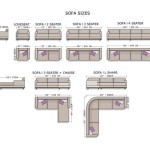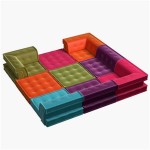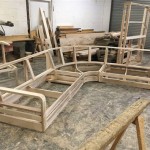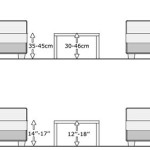DIY No-Sew Sofa Cover: Refresh Your Living Room Without Needles
Revitalizing your living room doesn't always require a complete furniture overhaul. A simple, yet effective solution lies in crafting a DIY no-sew sofa cover. This project allows you to customize your sofa's look, shield it from wear and tear, and potentially save a significant amount of money compared to purchasing a new cover. This article will guide you through the process of creating your own no-sew sofa cover, highlighting key considerations and techniques for a successful outcome.
1. Planning and Materials
The first step involves careful planning to ensure your project is successful. Begin by measuring your sofa accurately. Determine the length, width, and depth of each section, and ensure all measurements are precise to avoid fabric shortages. Consider the style you're aiming for: a simple, fitted cover, a loose throw, or a tailored look. Choose a fabric that complements your existing décor and is easy to work with. For a no-sew project, opt for fabrics like stretch jersey, fleece, or cotton, which are forgiving and require minimal stitching.
Gather your necessary materials:
- Fabric (enough to cover your sofa with allowance for seams and gathers)
- Fabric scissors
- Measuring tape
- Safety pins (for holding fabric sections in place)
- Tacky glue or fabric adhesive
- Iron and ironing board (optional)
2. Cutting and Assembling the Fabric
Lay out your chosen fabric, and carefully cut the pieces according to your sofa measurements. Remember to account for seam allowances, particularly if you're using a fabric that doesn't fray easily. For the seat cushion, cut two pieces of fabric, one for the top and one for the bottom. Consider adding a decorative trim or piping if desired, cutting and attaching it to the fabric edges before assembly.
To assemble the sofa cover, place the fabric pieces for the seat cushions right side together and pin them along all edges. Use a fabric adhesive or tacky glue to secure the fabric edges together. For a more tailored look, consider using a serger or zigzag stitch on the fabric edges before gluing.
Repeat this process for the back and armrests, ensuring you cut each piece to the correct size and leave enough fabric to accommodate gathers or folds. Pin the sections together, using safety pins to secure the fabric in place.
3. Securing and Finishing
Once all the sections of the sofa cover are assembled, it's time to attach them to the sofa. Use tacks, staples or even fabric glue to secure the fabric to the sofa's framework. Pay attention to the tension of the fabric, ensuring it's taut and smooth without pulling unevenly. For a more polished look, finish the edges of the fabric with a decorative trim or piping. You can also use a fabric adhesive to glue the edges of the fabric down for a clean and professional finish.
For added security and a neat appearance, consider using a fabric iron-on adhesive tape to further secure the fabric edges. This tape is particularly useful for areas that experience more wear and tear, such as the seat cushions and armrests.
Remember that this guide provides a general framework, and you may need to adjust the steps based on your specific sofa dimensions and the type of fabric you chose. Always consult online tutorials or sewing guides for detailed instructions and tips for your chosen fabric and design.

Couch Cover Using Drop Cloth No Sewing
:max_bytes(150000):strip_icc()/9CraftingNook-499f3378b698461cb206f172f76a9286.jpg?strip=all)
20 Diy Couch Cover Ideas For Any Budget

Diy Drop Cloth No Sew Slipcover For Couches And Sectionals

No Sew Drop Cloth Slipcover Town Country Living

Diy No Sew Drop Cloth Slip Cover For Sectional A Quaint Life

Diy Couch Cover Ideas Easy Sofa Slipcovers You Can Make O Sewing

5 Steps In Turning A Sheet Into Couch Cover No Sewing

Diy Room Decor 30 Dollars Or Less No Sew Reupholster Slipcover Sofa Make Over Usingsheets Affordable

No Sew Simple Cushion Re Cover Diy Picklee

How To Use Canvas Drop Cloths As Slip Covers No Sewing Required








